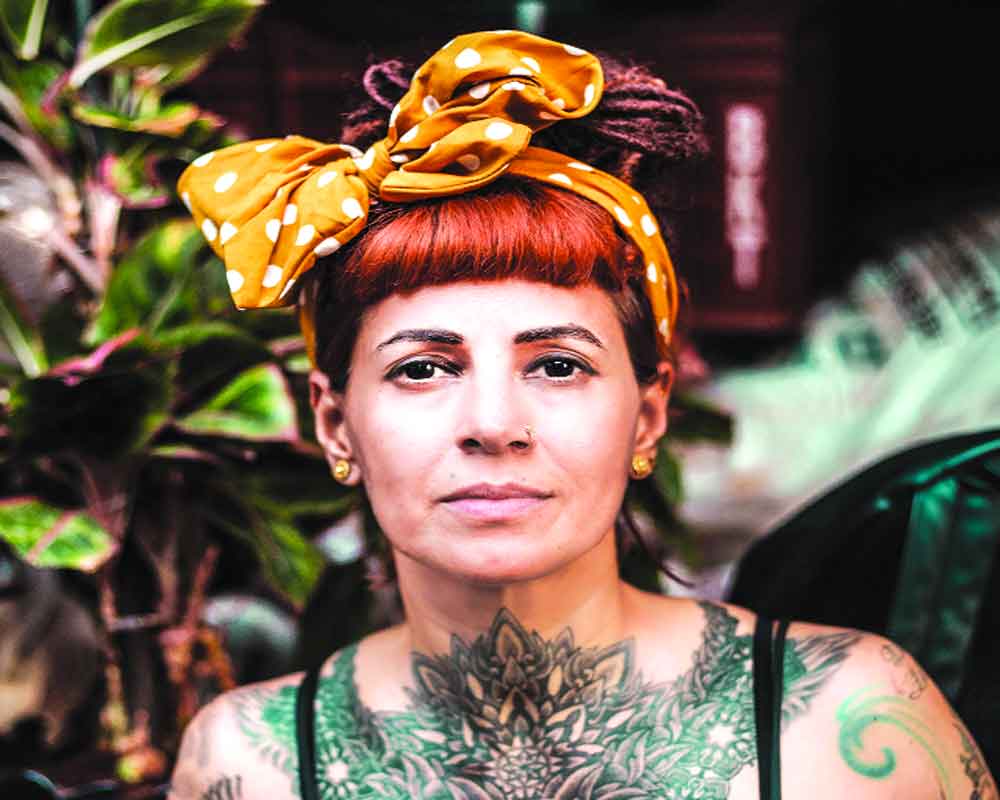Filmmaker Sapna Moti Bhavnani, in her web documentary, Sindhustan, explores the migration of the Sindhi community post-Partition through a series of tattoos on her body. She talks about why she explained it through art, not words. By Team Viva
When Warsan Shire said, “No one leaves home unless/ Home is the mouth of a shark/ You only run for the border/ When you see the whole city running as well,” it continued to be a reality for many people and their communities who lost their cultural and regional identities in the blink of an eye.
Celebrity hairstylist and filmmaker Sapna Moti Bhavnani’s web documentary, Sindhustan, recalls one such event where a community, amid political upheavals and religious riots, was again forgotten. It explores the migration of the Sindhi community to India during and post-Partition. The first inspiration for such a project came to her when she discovered how her father, born in Shikarpur in Sindh, migrated from Karachi to Bombay after Partition and lived in refugee camps. The film, narrated through a series of extensively designed body tattoos on Sapna’s body, was also inspired by a random conversation with her grandmother, a few years ago.
She says, “I had gone to meet my grandmother over lunch one day. I had covered myself because I had just started getting inked at that time. She commented on those tattoos by calling me ‘old-fashioned.’ I was stunned to hear that term from a 90-year-old woman. She then explained the theory behind her saying so — when we first came to this planet, we lived in tribes and didn’t have any borders or governments or territories. We had extended families and each one of them had their own markings. She said, ‘You are actually going back to your roots and that makes me very happy.’”
And that moment, she says, made it evident for her that she was going to write their stories with that ink. It was when she decided that it was the best way to tell the story — “to herself become the story.” The tattoos illustrate various stories of Sindhis from both India and Pakistan. It is made using Ajrak, a Sindhi design art form, as well as Madhubani from India. The tattoos, showcased only on her legs in the film, depict the legends of Jhulelal (a revered deity of Sindhi Hindus), a vegetarian crocodile, a family enjoying a picnic near the river Sindh and more. For the audience, they would look like a visual map of South Asia and its division, an art gallery of memories and a story narrated on the skin. But for Sapna, her legs are now like a museum, which tell the tales of a lost culture. Well, just as our footprints mark how long we have traversed, for her, too, “my legs symbolise my journey and the very roots, where I come from.”
Well, contrary to this concept, usually, a film’s idea is conveyed through conversations, dialogues and some fictionalised version of reality. So why did she think that designs and art could help her best express more than the words? She says, “The film features narrations of real experiences of Sindhi people who remained in Pakistan during the Partition but later, had to migrate to India as many Hindu Sindhis were being forced to convert to Islam. And just to sustain, they had to adapt to new cultures and practices, learn a new language and engage in newer trades, worldwide. This loss of their homeland slowly led to a death of their own heritage and culture. History books never did justice to Sindhis while explaining the Partition. Hence, I don’t think a fictional representation of this event — history’s largest migration of a culture — would have been the best choice. It’s being talked about openly for the first time.” It’s why, she says, it’s not a film, but a “movement.”
When one talks about Sindh or Sindhis, one is reminded of how even though the province did not become a part of India after 1947, it still echoes through our voices when we sing these lines of the National Anthem — Punjab-Sindh-Gujarata-Maratha, Dravida-Utkala-Banga. For Sapna, it’s because even though the state isn’t ours but there are many Sindhis, who are Indians and have been residing here since Independence. And hence, she adds, “it’ll always be sung like that.”
Sapna, who is currently working on her book, tentatively titled, Chapter One, recalls that she was denied the visa to Sindh some time ago. And that’s when “I became my land. Hence, Sindhustan is like a hope for me that one day, I’d be able to cross the border and touch that soil where my ancestors lived. I wait with love!”
From a hairstylist to a filmmaker, her journey has certainly been a very transitional one. She says, “I never believe in transitioning completely and hence, I haven’t left hairstyling at all. I still do that and will continue to do so. But yes, seven years into making this important film did mark the beginning of something new and relevant.”
Well, certainly the reason why the film is making rounds at various international film festivals and winning hearts and accolades. To name a few, Excellence in Cinema Award at AIFF May 2019, Official Selection from India at the MAMI Film Festival Asia Premiere 2019, etc.


























